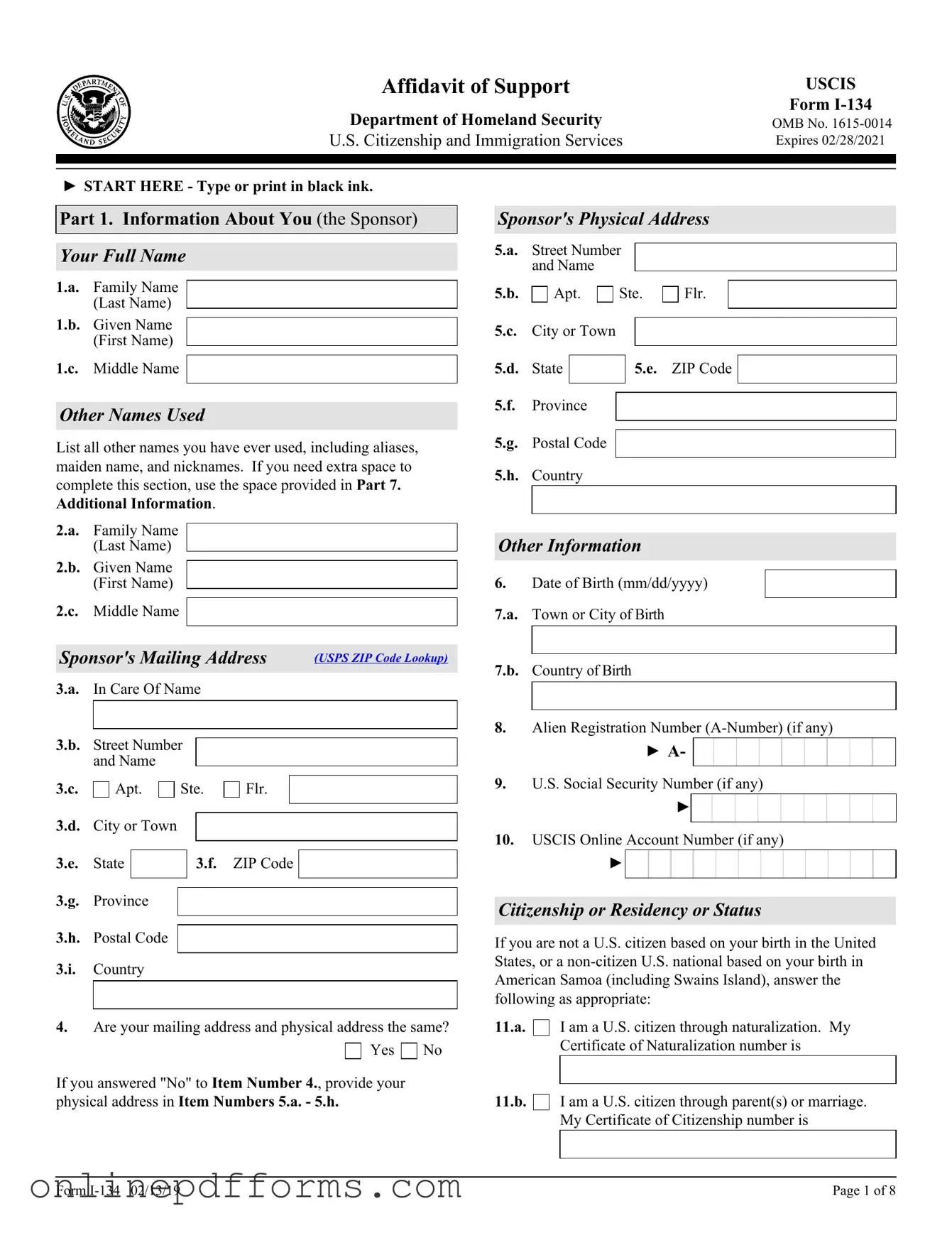The USCIS I-134 form, known as the Affidavit of Support, is similar to the I-864 form, which is also an Affidavit of Support but serves a different purpose. While the I-134 is often used for non-immigrant visa applicants, the I-864 is required for most family-based and some employment-based immigration cases. Both forms aim to demonstrate that the sponsor has sufficient financial resources to support the applicant, but the I-864 carries more legal weight and is binding, meaning the sponsor is financially responsible for the immigrant once they arrive in the U.S.
Another document akin to the I-134 is the I-944, Declaration of Self-Sufficiency. This form is used to evaluate an applicant's financial situation and potential reliance on public benefits. Like the I-134, the I-944 requires detailed information about income, assets, and liabilities. However, the I-944 focuses more on the applicant's personal financial status rather than the support offered by a sponsor. Both documents are essential in assessing the financial viability of an applicant, but they serve different roles in the immigration process.
The I-130 form, Petition for Alien Relative, is also comparable to the I-134 in that it involves family connections. The I-130 is used by U.S. citizens and lawful permanent residents to establish a relationship with a foreign relative who wishes to immigrate. While the I-134 is about financial support, the I-130 is about proving the familial relationship. Both forms are critical in the immigration process, as they help facilitate the entry of family members into the United States.
The DS-260, Immigrant Visa Electronic Application, shares similarities with the I-134 in that it is part of the visa application process. The DS-260 is used by individuals applying for immigrant visas and requires information about the applicant's background, including financial details. Like the I-134, it aims to ensure that the applicant will not become a public charge. However, the DS-260 is a comprehensive application that covers various aspects of the applicant’s life, while the I-134 is specifically focused on the sponsor's financial commitment.
Lastly, the Form I-751, Petition to Remove Conditions on Residence, can be compared to the I-134 in the context of immigration sponsorship. The I-751 is used by individuals who obtained conditional residency through marriage to a U.S. citizen or permanent resident. It requires the couple to demonstrate that the marriage is genuine and not entered into for immigration purposes. While the I-134 addresses financial support, the I-751 focuses on the legitimacy of the relationship, both playing crucial roles in ensuring that immigrants are supported and that their relationships are valid.
